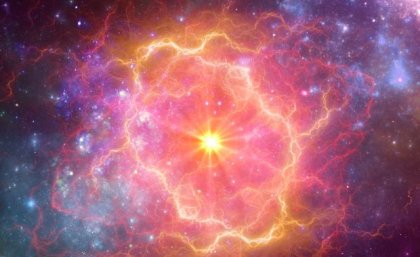
An international project mapping millions of galaxies has provided a ‘tantalising’ insight into the mysteries of dark energy and could reshape our understanding of the history of the Universe, according to a leading University of Queensland astrophysicist.
Key points:
- A 10-year global project studied exploding stars (supernovae) in night skies
- The speed that supernovae move away from Earth can reveal the acceleration of the expansion of the Universe
- Results show the Universe may be slightly younger than previously thought
Professor Tamara Davis from UQ’s School of Mathematics and Physics was a collaborator on The Dark Energy Survey (DES), a decade-long research project to observe the southern skies and analyse more than 1500 exploding stars, called supernovae.
Professor Davis joined more than 400 scientists from across the globe who painstakingly surveyed the night skies using a sensitive camera mounted in an observatory high in the Chilean Andes.
“The scale of this study is unprecedented, dwarfing the original Nobel-winning research which used just 52 supernovae to discover the Universe is expanding at an accelerating rate,” Professor Davis said.
“DES is a massive scale-up in data analysis that gives us a never-before-seen glimpse into the expansion of the Universe and exactly how old it is.
“The best-accepted model of the Universe has a background acceleration, called dark energy, that doesn’t change.
“Our results suggest the acceleration might actually be weakening, which would mean the Universe might also be a tiny bit younger than previously thought – by 100 million years or so.”
 Professor Davis helped lead OzDES, the Australian contingent of the DES project, measuring the rainbow of light coming from galaxies that hosted supernovae – some of which are so far away that they emitted the light before Earth was even formed.
Professor Davis helped lead OzDES, the Australian contingent of the DES project, measuring the rainbow of light coming from galaxies that hosted supernovae – some of which are so far away that they emitted the light before Earth was even formed.
“More than 30 researchers from Australian universities including UQ and Australian National University came together to provide critical data on the ‘redshift’ of each supernova – a measurement related to the speed they’re moving away from Earth due to the expansion of the Universe,” Professor Davis said.
“To measure the redshifts of these ultra-faint sources, we observed the sky for 100 nights spread across six years through the Anglo-Australian Telescope at the Siding Spring Observatory in New South Wales.
“A crucial part of getting these results was comparing the OzDES redshift to the DES distances which revealed the acceleration of the expansion of the Universe.
“Dark energy is the missing piece of the puzzle in our fundamental understanding of the Universe and the scale of our results gives us a chance to understand it in a whole new light.”
UQ PhD candidate Ryan Camilleri ran the final cosmology analysis, testing the measurements against many different models of dark energy to find the most promising one.
“As a PhD student, the prospect of contributing to our understanding of dark energy, the mysterious force driving the accelerated expansion of the Universe, is extremely exciting,” Mr Camilleri said.
Patrick Armstrong from ANU’s Research School of Astronomy and Astrophysics further analysed the supernova data to produce cosmological results.
“There's a lot of very exciting collaboration in the future combining our results with other surveys, as well as investigating the impact and the implications of the shift we found," Mr Armstrong said.
“Never before have so many distant supernovae been observed and analysed – we’re at the tip of the iceberg and it’s truly an exciting time.
“The nature of dark energy is still out there to be discovered – this new method will help future generations of stargazers to explore its mysteries.”
Data from the project has been published on the Cornell University website.
Above left: A supernova exploding in a spiral galaxy, as discovered by DES using the Dark Energy Camera. Image: DES Collaboration.
Media: Professor Tamara Davis, tamarad@physics.uq.edu.au, +61 432 526 989; Patrick Armstrong (ANU), Patrick.Armstrong@anu.edu.au, +61 421 115 862; UQ Faculty of Science Media, science.media@uq.edu.au, +61 438 162 687.
.jpg)










